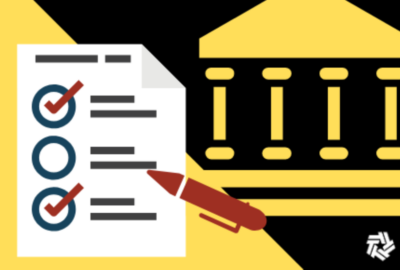IRS seeks $104B for multi-year modernization fund to maintain customer service improvements
The IRS is telling lawmakers that billions of dollars in multi-year modernization funds are helping the agency provide a level of customer service.
The IRS is telling lawmakers that billions of dollars in multi-year modernization funds are helping the agency provide a level of customer service that taxpayers expect — and is asking for more funding to keep up with that demand.
The agency handled a million more calls this filing season, compared to the 7.7 million it answered last year — and three million more calls than in 2022.
The IRS exceeded its customer service goals for the second year in a row, providing an 88% level of phone service during this year’s filing season. That’s compared to only 15% of callers getting through to the agency in 2022.
On average, callers on its main phone lines got their questions answered in about three minutes.
IRS Commissioner Danny Werfel told the Senate Finance Committee that the IRS received more than 100 million individual tax returns this filing season, and issued more than $200 billion in refunds.
“The Inflation Reduction Act funding has enabled the IRS to have one of its best filing seasons ever, in terms of customer service,” Werfel said at a hearing Tuesday.
The IRS is using its multi-year modernization funding to rebuild its workforce and modernize some of the oldest legacy IT systems in the federal government.
“The agency is rebounding from some very tough and lean years during the past decade,” Werfel said.
Werfel said the IRS “still has much more work to do on many fronts.” That includes answering even more incoming calls, expanding digital options for all taxpayers, strengthening and strengthening data security.
The IRS, pointing to these customer service improvements, is calling on Congress to extend the funding windfall it received under the Inflation Reduction Act.
The agency is requesting $12.3 billion for its fiscal 2025 budget — a flat budget compared to current funding levels.
The Biden administration, however, is also proposing Congress reverse a $20 billion cut to the IRS’ Inflation Reduction Act funds, and extend the multi-year funding through fiscal 2034.
All told, the IRS would receive $104 billion in multi-year funds under this budget proposal — up from the original $80 billion it received in the Inflation Reduction Act.
The IRS expects a strong return on investment. With the extra funding, the agency estimates it could recover an extra $341 billion in additional revenue over 10 years.
Aside from improved taxpayer service, the IRS is using Inflation Reduction Act funding to beef up its enforcement operations and shrink a growing “tax gap” between what taxpayers owe and what the agency can collect.
Werfel told the committee that topping off the agency’s modernization fund would allow the IRS to avoid funding “cliffs” as it spends down the Inflation Reduction Act funds. More funding, he added, would allow the agency to retain its growing workforce and keep IT modernization projects on track.
“It’s not about asking for more and more and more money to build an ever-increasing IRS. It’s about achieving a baseline. Because what happens in the out-years is all the money goes away. So if you look at 2026, we lose all of our ability to maintain services,” Werfel said. “If you look at 2028 and 2029, we lose all of our ability to maintain technology, because there is a cliff. What the president’s budget is saying is, ‘Please make sure that the same result exists in 2026, 27, 28, and 29.’ That’s all the president’s budget is asking.”
The IRS recently hired 5,000 new employees to answer taxpayer calls, and exceeded 90,000 total employees for the first time in a decade last year. Reuters recently reported that Werfel expects the agency’s workforce to exceed 100,000 employees in the coming years.
Werfel also said the IRS has tapped into its multi-year modernization funds to support a high level of service to taxpayers that its annual budget doesn’t cover. He said the agency’s annual budget is about $2-3 billion short of what’s needed to meet its “services baseline.”
“Our budget proposal is not saying, ‘We need a lot more money to get the job done.’ We have gotten, for example, the service to an extraordinarily high level. The money we’re asking for in the out-years of the president’s budget — it’s to sustain. We don’t want to lose those 5,000 new assisters. We don’t want to have to fire them or lay them off,” Werfel said. “That means that phone calls won’t get answered. So the funding that we’re asking for, is making sure that we can sustain the right size customer service workforce and the right tools, so this new service level that we’ve achieved can be sustained into the future.”
Committee Chairman Ron Wyden (D-Ore.) praised the IRS for using its modernization funding to deliver a higher level of customer service to taxpayers.
“For the second filing season in a row, the IRS is proving that it can provide a top-notch level of taxpayer service when Congress gives it the resources,” Wyden said.
Committee Ranking Member Mike Crapo (R-Idaho), however, pushed back on the IRS’ request for more modernization funding.
“This underscores that the initial windfall was not a cure, the IRS has not transformed, and the president believes the only way to realize that vision is to just spend more,” Crapo said. “While I support a transformed IRS, this approach is not a solution.”
Direct File pilot ‘exceeded’ IRS expectations
More than 100,000 taxpayers used the IRS’ new Direct File platform to file their federal tax return this filing season, exceeding the agency’s target for users. About 50,000 of those taxpayers filed their returns during the final week of the filing season.
The IRS invited taxpayers in 12 states to test out the Direct File pilot program this year. The agency is reviewing user feedback, to see if it should scale up the program next year.
“We’re putting a new product on the street, if you will, and our customers, in this case, taxpayers, are going to let us know if the product is working effectively and if they think they would like to use the product in the future,” Werfel said.
The IRS launched Direct File pilot program with help from the General Services Administration’s 18F program, as well as the White House’s U.S. Digital Service.
“There’s a whole discipline around how you move more quickly to deliver incremental functionality — how you strip through bureaucracy and get decisions made more quickly, that you take calculated risks more regularly. And the IRS is no different. Federal agencies tend to not be agile when they do technology. That’s why you hear about projects, taking five, six, seven years here by sizing this in an increment that had impact. We were able to be more agile, have executional certainty and launch something that we can all learn from,” Werfel said.
Wyden (D-Ore.) said only a “fairly small percentage” of taxpayers were eligible to participate in the Direct File pilot, but added feedback from initial users has been “overwhelmingly positive.”
“Anyone who denies the Direct File pilot was a huge success, my guess, lives in another universe,” Wyden said. “It seems like a whole lot of people were very stunned that a federal agency, particularly one as frequently vilified as the IRS, was able to build a helpful website that works.”
Wyden said Direct File users collectively saved millions on fees that they would have paid to one of the tax software companies, and said the program, if it expands to more taxpayers in more states, “will be more popular every year.”
“Bottom line, Direct File is long overdue, and it’s the kind of public service the federal government ought to be providing to Americans whenever it can,” he said.
Crapo, however, called the program “wasteful and duplicative,” since some tax software companies already allow taxpayers below a certain income threshold to file online for free through the Free File Alliance program.
“Were the IRS to use this year’s Direct File spending to pay third-party providers to prepare and file returns instead, literally hundreds of times the number of taxpayers could file for free,” Crapo said. “The IRS spending hundreds of millions of its finite funding to simply test the utility of doing something that can already be done more efficiently, with better outcomes, and without the very real conflicts, while simultaneously pleading for more funding, calls for more oversight.”
The Government Accountability Office, in a report last week, found the IRS “has not produced comprehensive cost and benefit estimates needed to inform decision-making post-pilot.
GAO reports that IRS has budgeted $114 million for Direct File this year, and that the IRS, as of January spent $9.4 million on the Direct File pilot.
“Demand exceeded what we thought the day we launched the product widely,” Werfel said. “And then in terms of cost, we’re still gathering information, but I don’t see anything in the early data that points to over-exorbitant costs.”
Copyright © 2025 Federal News Network. All rights reserved. This website is not intended for users located within the European Economic Area.
Jory Heckman is a reporter at Federal News Network covering U.S. Postal Service, IRS, big data and technology issues.
Follow @jheckmanWFED






